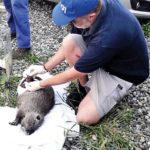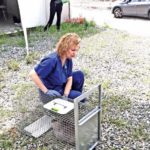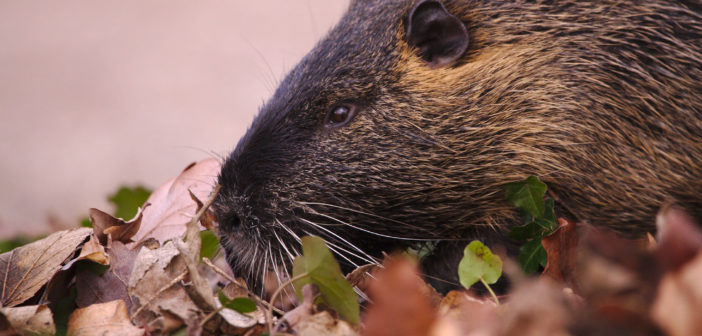There is a growing prejudice against nutrias in Italy, who are now viewed as public enemies by many. This semiaquatic rodent species, native to South America, was brought to Italy in the last century by fur traders. When nutria stopped being used for fur coats and were replaced by foxes, beavers and rabbits, they were killed or released in the proximity of rivers.

A nutria spotted in Northern Italy. This species reproduces rapidly and causes environmental degradation outside of their native habitat. Image credit Simone A. Bertinotti, CC BY-SA 3.0.
This had consequences, in particular in the Po Plains area of northern Italy. Indeed, this area constitutes a sort of happy oasis for nutria, where they can easily reproduce and secure the food they need.
However, the number of nutria increased exponentially, causing a series of problems. Nutrias are extremely fertile animals who reproduce rapidly; females can get pregnant up to three times per year. Moreover, they are prey animals, and in Italy there are not many predators, such as the anacondas, jaguars and pumas that nutria would encounter in their native habitats.

This nutria has been caught in a trap in order to be sterilized and released under a new humane population management program. Image credit OIPA Italy.
Furthermore, it is well known that nutria dig burrows that can cause landslides, especially in the area of the Po Plains, a territory with many irrigation channels used for intensive agricultural activities. Nutria also eat a large amount of plant matter, which can cause significant erosion and flooding in environments they are not native to.
As usual, the Italian authorities gave the green light to hunters to kill nutria as a primary response to this issue. However, following a lawsuit lodged by International Organization for Animal Protection (OIPA) and other animal rights organizations, the Regional Administrative Tribunal of Piedmont established that the killing of animals must be a last resort, to be performed only if the Institute for Environmental Protection (ISPRA) certifies the ineffectiveness of alternative non-invasive interventions. This judicial victory of animal welfare associations confirms our position that massive cull plans are not a viable solution to invasive species.
The solution

A nutria is laparoscopically sterilized as part of a humane population management program. Image credit OIPA Italy.
Mitzy Mauthe von Degerfeld and Giuseppe Quaranta, professors in veterinary sciences at the CANC (Non-Conventional Animal Center) of the University of Turin have no doubts: the nutria management plan through humane intervention is going to be a huge success.
The pioneering project, the first of its kind in Europe, supported by the Metropolitan City of Turin and is currently in its third phase. It is not only achieving its goal, but it has also the potential to become a reference model for other cities in Italy and around Europe.
The two professors say they were inspired by the best practices implemented to manage cat colony populations. Sterilization by laparoscopy provides a rapid and non-invasive population management method, which allows nutria to return to their home only two hours after being captured, all in perfect health.

A nutria has been caught in this trap in order to be sterilized and released. Image credit OIPA Italy.
Nutria are caught by volunteers from various animal welfare associations. The animals then undergo surgery inside a well-equipped mobile clinic and are released back in the territory where they were captured.
The choice of a non-invasive method to tackle the spread of nutria colonies is a very important step forward for animal protection. Furthermore, the project is fully in line with European Union (EU) regulations on invasive alien species (the IAS regulations), which establishes rules regarding species that have been introduced into a natural environment where they are not normally found, with serious negative consequences for their new environment. Nutria are included in the list of invasive alien species of concern, and the IAS regulations state a need for concerted management actions to prevent them from spreading any further. This sterilization method is the most effective and most humane way to meet that goal.
Featured image: a nutria. These social and semiaquatic rodents can reproduce rapidly in environments where they lack predators, causing issues such as over-population and environmental degradation, but that doesn’t mean they deserve to be killed or subjected to other cruelty. Image credit stanze, CC BY-SA 3.0.





